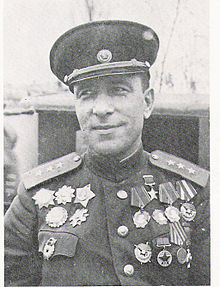There was a sense among some in the Sovietology community in the late 1980s that Soviet Operations Research (OR) was particularly advanced. People had noticed the 300-man Soviet Military History Institute and the Soviet use of the quantified “Correlation of Forces and Means,” which they used in WWII and since. Trevor Dupuy referenced these in his writings. They had noticed a number of OR books by professors at their Frunze Military Academy. In particular, the book Tactical Calculations by Anatoli Vainer was being used by a number of Sovietologists in their works and presentations (including TNDA alumni Col. John Sloan). There was a concern that the Soviet Union was conducting extensive quantitative analysis of its historical operations in World War II and using this to further improve their war fighting capabilities.
This is sort of a case of trying to determine what is going on by looking at the shadows on a cave wall (Plato analogy here). In October 1993 as part of the Kursk project, we meet with our Russian research team headed by Dr. Fyodor Sverdlov (retired Colonel, Soviet WWII veteran, and former head of the Frunze Military Academy History Department). Sitting there as his right hand man was Dr. Anatoli Vainer (also a retired Colonel, a Soviet WWII veteran and a Frunze Military Academy professor).
We had a list of quantitative data that we needed for the Kursk Data Base (KDB). The database was to be used as a validation database for the Center of Army Analysis (CAA) various modeling efforts. As such, we were trying to determine for each unit for each day the unit strength, losses, equipment lists, equipment losses, ammunition levels, ammunition expenditures, fuel levels, fuel expenditures, and so forth. They were stunned. They said that they did not have models like that. We were kind of surprised at that response.
Over the course of several days I got to know these two gentlemen, went swimming with Col. Sverdlov and had dinner over at Col. Vainer’s house. I got to see his personal library and the various books he wrote. Talked to him as much as I could sensitively do so about Soviet OR, and they were pretty adamant that there really wasn’t anything significant occurring. Vainer told me that his primary source for materials for his books was American writings on Operations Research. So, it appeared that we had completed a loop….the Soviets were writing OR books based upon our material and we were reading them and thinking they had a well developed OR structure.
Their historical research was also still primarily based upon one-side data. They simply were not allowed to access the German archives and regardless they knew that they should not be publishing Soviet casualty figures or any negative comparisons. Col. Sverdlov, who had been in the war since Moscow 1941, was well aware of the Soviet losses, and had some sense that the German losses were less, but this they could not publish [Sverdlov: “I was at Prokhorovka after the war, and I didn’t see 100 Tigers there”]. So, they were hardly able to freely conduct historical analysis in an unbiased manner.
In the end, at this time, they had not developed the analytical tools or capability to fully explore their own military history or to conduct operations research.

